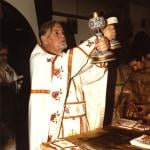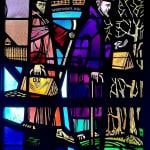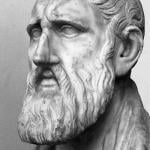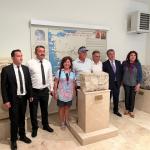One of the most important themes in the last supper is Bread. Brant Pitre, in his new book, Jesus and the Jewish Roots of the Eucharist: Unlocking the Secrets of the Last Supper, sees the Lord’s Supper as a new Exodus, a new Passover, and — today’s subject — the new Bread of Presence.
 In this chp Brant Pitre is seeking an answer why if this is a new Passover that Jesus pointed to “bread” and not “lamb” as that which they were to eat. And he thinks resolution to this can be found in the biblical (and post-biblical) teaching about the Bread of Presence.
In this chp Brant Pitre is seeking an answer why if this is a new Passover that Jesus pointed to “bread” and not “lamb” as that which they were to eat. And he thinks resolution to this can be found in the biblical (and post-biblical) teaching about the Bread of Presence.
What is the Bread of Presence? The “shewbread” or “showbread” of the Tabernacle, which was flanked by utensils used to pour out wine in a sacrifice made by a priest. The texts are found in Exodus 25:23-30; Leviticus 24:5-9 as well as at Luke 22:19-20.
Here are the parallels Pitre finds between Bread of Presence and the Last Supper:
1. Twelve cakes, twelve tribes and twelve disciples, twelve tribes.
2. Bread, wine of Presence and Bread and wine of Jesus’ presence.
3. Everlasting covenant and a new covenant.
4. Remembrance and Remembrance.
5. Offered by high priest, eaten by priests and offered by Jesus, eaten by disciples.
6. Eaten at Golden Table in Temple and eaten at Jesus’ table in the kingdom.
The best part of this chp is Pitre’s attentiveness in reading the Old Testament Bread of Presence texts and the later interpretations of those in Jewish literature. Here are the major ideas in the extensive Jewish interpretation:
The Bread of Presence (or “Face” of God) the primordial sacrifice of Melchizedek, the miraculous food of the Holy Place, and a living visible sign of God’s love for Israel.
And Jesus connects himself to the Bread of Presence when he says David ate that Bread and that he (Jesus) was greater than the Temple. The combination of bread and wine, and not bread and lamb, then, suggests to Pitre that Jesus is thinking not only of Passover and Manna but also the Bread of Presence.















